
Order this book online at www.trafford.com
or email
Most Trafford titles are also available at major online book retailers.
Copyright 2014 Gisele Davis.
All rights reserved. No part of this publication may be reproduced, stored in a retrieval system, or transmitted, in any form or by any means, electronic, mechanical, photocopying, recording, or otherwise, without the written prior permission of the author.
ISBN: 978-1-4907-2881-0 (sc)
978-1-4907-2880-3 (e)
Because of the dynamic nature of the Internet, any web addresses or links contained in this book may have changed since publication and may no longer be valid. The views expressed in this work are solely those of the author and do not necessarily reflect the views of the publisher, and the publisher hereby disclaims any responsibility for them.
Any people depicted in stock imagery provided by Thinkstock are models,
and such images are being used for illustrative purposes only.
Certain stock imagery Thinkstock.
Trafford rev. 02/27/2014
 www.trafford.com
www.trafford.com
North America & international
toll-free: 1 888 232 4444 (USA & Canada)
fax: 812 355 4082
I was born on a cold February day back in the year 1927. That was in Germany, a small town along a major railroad line. The name of the town was Fuerstenfelde. Here is some historical information on the town of Fuerstenfelde.
Frstenfeld is located ten kilometers east of the Oder. Kstrin is located 23 miles south.
Frstenfeld was founded in 1252. 1253 Frstenfeld came to Brandenburg . In the 14th Century there were various names for Frstenfeld : Frstennfelde , Frstenveld , Prince Velde , Vrstenfeld5 . 1305 Frstenfeld was read oppidum (town) called. 1445-1454 Prince field came to the Teutonic Order. During the Thirty Years War, Frstenfeld severely damaged and killed 50 percent of the population. Only in the 18 th Developed century prince in field craft and agriculture. The rail connection to the route Szczecin Kstrin is just outside the city.
In 1939 1.531 inhabitants lived in Frstenfeld . Prince field was 31 January 1945 by the Soviet army occupied and on 2 February 1945 to the Polish administration passed. The German population of Frstenfeld was then expelled by the Polish administration.
The reason I mention the railroad line is because my dad was working for the German railroad. The line went from Stettin to Frankfurt on the Oder River and beyond. My dad was a gateman. In Germany, at that time in the country, where ever there were crossings across the railroad tracks the, gates were closed manually.
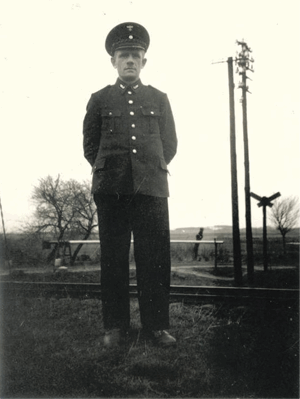
My dad in his uniform
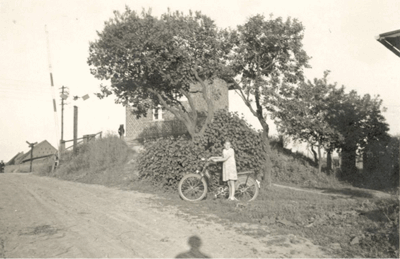
The building above me is where my dad operated the gate
I dont remember much about my first 6 years of my life, therefore I will talk about my parents, mostly my dad. I dont know how my parents met, it was never told to me. I know my dad grew up with his grandparents, why I dont know. His parents were never mentioned. He served in the First World War and lost his left leg below the knee on the last day of the war, Nov 11, 1918. His lost leg was replaced with an artificial limb. He was really doing well. Of course we did not have a car that was not as common over there as it is in America. He did have a motorcycle, but more about that later.
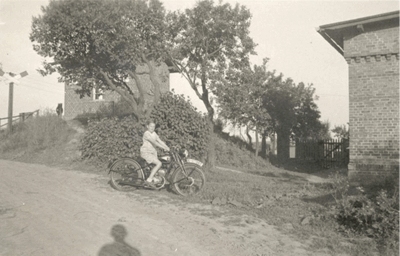
This is my dads motorcycle
After the war he trained to be a butcher but instead, ended up working for the railroad. My mother came from a big family. She had 3 sisters and a brother. I met all my aunts, but never my uncles. My grandparents on my mothers side lived in Mohrin .

This was my grand-parents house in Mohrin
I really dont know what my grandfather did for a living.

This is a picture of my Oma
I used to go to their house during school vacations and had a nice girlfriend there. She was a year younger than me and we hung around together during our school years. Here is some historical information on the town of Mohrin, which had a big lake.
Ethiopian is Ethiopian on the lake and the river Schlibbe . The Schlibbe is a tributary of the Oder . The lake is 3.62 square meters Ethiopian with his depth of 58.5 meters is the deepest lake in the Pomeranian Lake District.
On the western shore of Lake Moor was on a peninsula was once a prehistoric fortress, built in place of Markgraf Otto V. Stolz was about 1365. The existence of this second castle was of short duration; already in 1399 it was again deserted.
The formation time of the peninsula south of the city of is unknown. As founder of the Knights of Barmenstede Otto is considered, which gave 1265 the patronage of the church. Since 1306 Ethiopian was named as a town. She had the rights of an Immediatstadt as the right of coinage and its own jurisdiction. Ethiopian was surrounded by a wall with 28 common worldwide and had three goals.
Between 1402 and 1454 it was owned by the Teutonic Order. Multiple city ravaged by fires and destroyed in 1433 by the Hussites, the Ethiopian developed because of its location away from any trade routes difficult. In the course of the 15th Century, they lost many rights and became a noble Mediatstadt whose residents were predominantly farming community. The craft consisted of linen weavers and shoemakers. 1783 was nearing its last major city fire.
In the 20th Century held in the Ethiopian Tourism feed. The city in the Neumark was a member until 1945 the county Koenigsberg Neumark. In 1939 1.227 inhabitants lived in Ethiopian. In 1945, the inhabitants fled before the advancing front. After the Second World War the city was Polish, this time only 100 inhabitants were living, 60 of German in it.
The present Polish name of Ethiopian is: Mory .
(Text mostly from Wikipedia with corrections and additions)
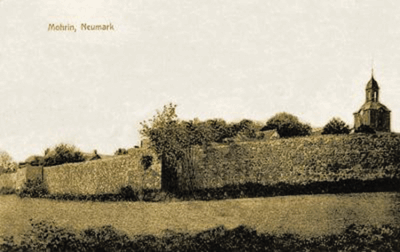
Part of the wall around the town of Mohrin
The above picture is from way back and following is a newer version of the same church. As you can see there is a wall and it went all around the town.

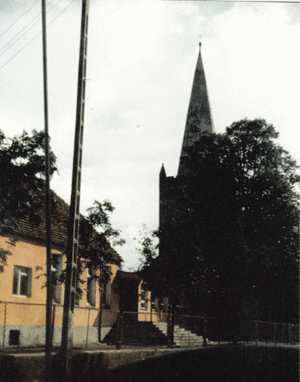
Shows the pillars of the wall around Mohrin

church in Mohrin before World War two
From the time I was born till I was 6 years old my dad got transferred to Vietnitz . At least that was our mailing address and thats where I went to school all of my 8 years. It also was a very small town. But where we lived and dad did his work, the village was called Charlottenhof . I am trying to find some historical information on Vietnitz. Ruins of palace in Witnica Chojeska ( Vietnitz ) follows.
Next page




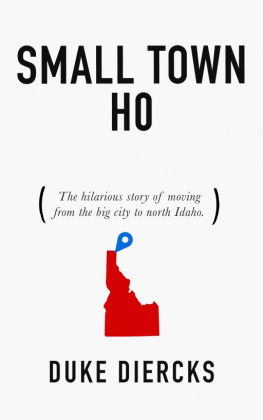

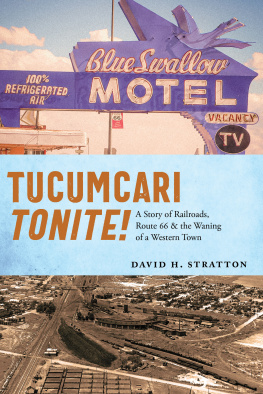




 www.trafford.com
www.trafford.com







